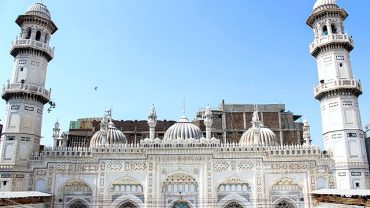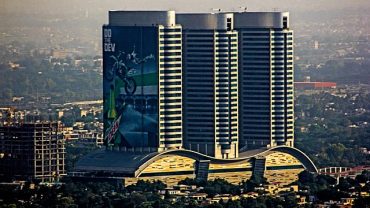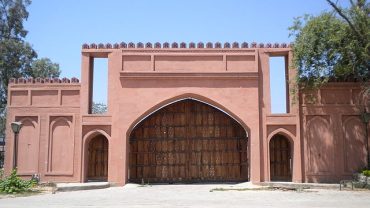Peshawar Museum: A Gateway to History
Nestled in the historic city of Peshawar, the Peshawar Museum is a treasure trove of cultural and historical artifacts, offering a glimpse into the rich and diverse heritage of the region. Established in 1907 during the British Raj, the museum is renowned for its extensive collection of Gandhara art and is one of the most significant museums in South Asia.
Why Visit Peshawar Museum?
The Peshawar Museum is a must-visit for history enthusiasts and art lovers. With its unique architectural style and vast collection of artifacts, it provides an immersive journey through the ancient, medieval, and modern history of Peshawar and its surrounding regions.
What to Expect at Peshawar Museum:
- Gandhara Art Collection:
The museum houses one of the largest collections of Gandhara art in the world. Visitors can marvel at beautifully carved statues of Buddha, Bodhisattvas, and scenes from Buddha’s life, showcasing the blend of Greek, Roman, and Buddhist influences that flourished in the region. - Cultural and Historical Artifacts:
The museum’s galleries feature a wide array of artifacts, including Islamic art, ethnographic displays, ancient coins, manuscripts, and weapons. These exhibits provide insight into the diverse cultures and civilizations that thrived in the area. - Indo-Greek and Kushan Period Relics:
The museum also displays artifacts from the Indo-Greek and Kushan periods, including intricately designed pottery, jewelry, and everyday objects that shed light on ancient lifestyles. - Architectural Beauty:
The building itself is a masterpiece, combining Mughal and British colonial architectural styles. Its red-brick facade, arched windows, and domed roof add to the charm of the museum, making it a landmark in its own right.
Facilities and Accessibility:
- Location: The museum is centrally located on Saddar Road, making it easily accessible from all parts of Peshawar.
- Timings: The museum is open daily, except on public holidays, from 9:00 AM to 4:00 PM.
- Entry Fee: The ticket price is nominal, with discounted rates for students and families.
- Guided Tours: Knowledgeable guides are available to enhance your visit by providing detailed insights into the exhibits.
Nearby Attractions:
After exploring the Peshawar Museum, you can visit these nearby landmarks:
- Qissa Khwani Bazaar: A historic market filled with vibrant shops and rich cultural tales.
- Mahabat Khan Mosque: A stunning Mughal-era mosque located in the heart of the city.
- Bala Hisar Fort: A centuries-old fortress offering panoramic views of Peshawar.
Final Thoughts
Peshawar Museum: A Gateway to History
Nestled in the historic city of Peshawar, the Peshawar Museum is a treasure trove of cultural and historical artifacts, offering a glimpse into the rich and diverse heritage of the region. Established in 1907 during the British Raj, the museum is renowned for its extensive collection of Gandhara art and is one of the most significant museums in South Asia.
Why Visit Peshawar Museum?
The Peshawar Museum is a must-visit for history enthusiasts and art lovers. With its unique architectural style and vast collection of artifacts, it provides an immersive journey through the ancient, medieval, and modern history of Peshawar and its surrounding regions.
What to Expect at Peshawar Museum:
- Gandhara Art Collection:
The museum houses one of the largest collections of Gandhara art in the world. Visitors can marvel at beautifully carved statues of Buddha, Bodhisattvas, and scenes from Buddha’s life, showcasing the blend of Greek, Roman, and Buddhist influences that flourished in the region. - Cultural and Historical Artifacts:
The museum’s galleries feature a wide array of artifacts, including Islamic art, ethnographic displays, ancient coins, manuscripts, and weapons. These exhibits provide insight into the diverse cultures and civilizations that thrived in the area. - Indo-Greek and Kushan Period Relics:
The museum also displays artifacts from the Indo-Greek and Kushan periods, including intricately designed pottery, jewelry, and everyday objects that shed light on ancient lifestyles. - Architectural Beauty:
The building itself is a masterpiece, combining Mughal and British colonial architectural styles. Its red-brick facade, arched windows, and domed roof add to the charm of the museum, making it a landmark in its own right.
Facilities and Accessibility:
- Location: The museum is centrally located on Saddar Road, making it easily accessible from all parts of Peshawar.
- Timings: The museum is open daily, except on public holidays, from 9:00 AM to 4:00 PM.
- Entry Fee: The ticket price is nominal, with discounted rates for students and families.
- Guided Tours: Knowledgeable guides are available to enhance your visit by providing detailed insights into the exhibits.
Nearby Attractions:
After exploring the Peshawar Museum, you can visit these nearby landmarks:
- Qissa Khwani Bazaar: A historic market filled with vibrant shops and rich cultural tales.
- Mahabat Khan Mosque: A stunning Mughal-era mosque located in the heart of the city.
- Bala Hisar Fort: A centuries-old fortress offering panoramic views of Peshawar.
Final Thoughts
The Peshawar Museum is not just a repository of artifacts; it is a journey through centuries of history and art. Whether you are a scholar, a traveler, or simply curious about the past, this museum promises an enlightening and enriching experience. With its stunning collection, serene ambiance, and proximity to other iconic landmarks, the Peshawar Museum is a must-visit destination that showcases the soul of Peshawar and its storied legacy.The Peshawar Museum is not just a repository of artifacts; it is a journey through centuries of history and art. Whether you are a scholar, a traveler, or simply curious about the past, this museum promises an enlightening and enriching experience. With its stunning collection, serene ambiance, and proximity to other iconic landmarks, the Peshawar Museum is a must-visit destination that showcases the soul of Peshawar and its storied legacy.





Comment (0)